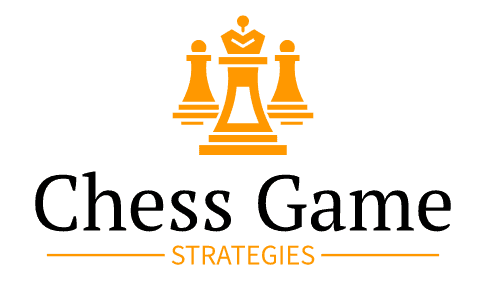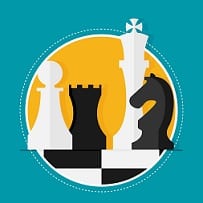![The Passed Pawn : Point Count Chess: [+]](https://www.chess-game-strategies.com/wp-content/uploads/2021/01/The-Passed-Pawn-Point-Count-Chess--300x200.jpg)
About This Article…
This article includes my notes, additional images and interactive chess positions from my study of Horowitz & Mott-Smith’s book, Point Count Chess.
Source:
Point Count Chess,
Chapter 21. The Passed Pawn (p246-254)
- Actual and Potential Passed Pawns
- The Midgame Passed Pawn
- The Crippled Majority
A Pawn that has no enemy Pawns in front or on adjacent squares is referred to as a Passed Pawn (Diagram 1). Only the enemy Pieces can prevent its march to promotion.
Diagram 1: White’s b-Pawn is an
Actual Passed Pawn; White’s c- &
e-Pawns are Potential Passed Pawn.
The prospect of promotion, for the owner of a Passed Pawn, is what scores the plus point.
While analyzing the board for Passed Pawns, we must distinguish between an Actual and a Potential Passed Pawn.
- In Diagram 1, White’s b-pawn is an Actual Passed Pawn, as there’s no enemy pawn in front or on adjacent files to possibly capture, thus prevent the pawn advancing towards promotion.
- In contrast, White’s c- & e-Pawns are Potential Passed Pawns, as Black’s pawn on d5 (being on an adjacent file), could capture either of White’s Pawn, wiping out their current potential for Promotion. However, while they remain on the board, with no Pawn directly blocking their path, then both White’s c- & e-Pawns retain their “Potential” for becoming a Passed Pawn.
It should be noted that Potential Passed Pawns are NOT a countable point (advantage); only Actual Passed Pawns. The phrase “don’t count your chickens until they’ve hatched” springs to mind, here!
Referring back to Diagram 1, notice how, if it were Black’s turn, then …dxe4 would give Black, not just a Passed Pawn, but a Protected Passed Pawn, on the e-file.
The key difference between these two classifications:
Actual Passed Pawns
- Will not face the threats from enemy Pawns on adjacent files, when advanced.
- It’s easier for it/them to be guided towards Promotion (the ultimate goal, after becoming a Passed Pawn).
- Often enjoy a decisive lead in time over the potential.
Potential Passed Pawns
- Are not yet Passed Pawns, as there is at least one enemy Pawn on an adjacent file.
- Providing there’s no intervention from enemy Pieces, the Potential Passed Pawn can be advanced, with the view to becoming an Actual Passed Pawn.
- It/they usually requires advancing support from two or more Pawns, in order to help Promote the Potential Passed Pawn (the other Pawns are often sacrificed to remove the enemy Pawns; this creates the Actual Passed Pawn, which can then be guided toward its Promotion square).
H&M-S say the emergence of an Actual Passed Pawn, in the Middlegame, or even the Opening phases of the game, “is what launches the battle of simplification,” and that “the player with the (Actual Passed Pawn) seeks to simplify, to swap off pieces, to precipitate the endgame; his opponent resists exchanges and tries to complicate.”
Moving On: The Passed Pawn, PCC Examples (Page 2).


